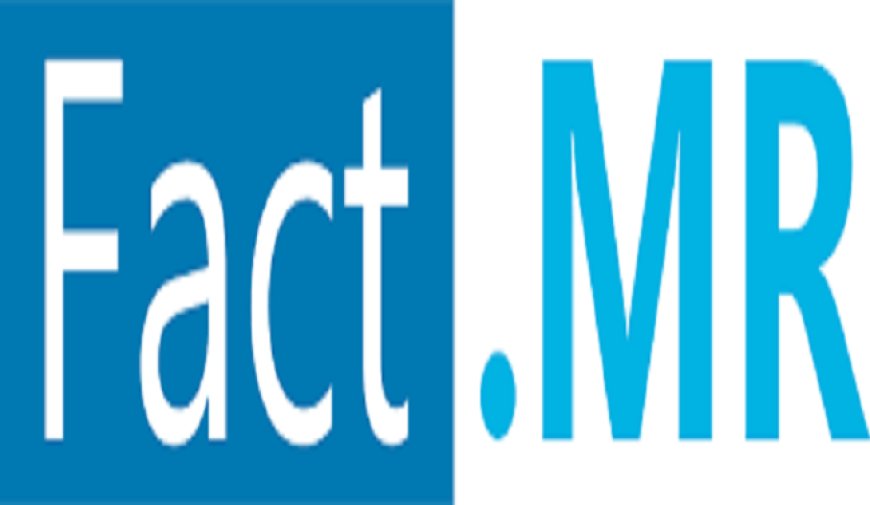Automotive Windshield Market Growth, Trends, Product Scope & Forecast by Fact MR
The global automotive windshield market is valued at US$ 16.6 billion in 2022 and is projected to grow to US$ 22.8 billion by 2027. During the forecast period from 2022 to 2027, worldwide automotive windshield shipments are expected to rise at a CAGR of 6.5%.

The global automotive windshield market is valued at US$ 16.6 billion in 2022 and is projected to grow to US$ 22.8 billion by 2027. During the forecast period from 2022 to 2027, worldwide automotive windshield shipments are expected to rise at a CAGR of 6.5%.
The automotive windshield market is a vital segment of the global automotive industry, playing a crucial role in vehicle safety, aerodynamics, and overall driving experience. Windshields are designed to protect occupants from external elements such as wind, dust, and debris while providing structural integrity to the vehicle. The market is influenced by technological advancements, increasing vehicle production, and growing consumer awareness regarding safety. As vehicles continue to evolve with smart features, the demand for high-quality, durable, and technologically advanced windshields is expected to rise significantly in the coming years.
Want Full Report? Enquire Here-https://www.factmr.com/report/13/automotive-windshield-market
Market Insights
Several key factors are driving the growth of the automotive windshield market. The increasing adoption of advanced driver-assistance systems (ADAS) has led to the integration of sensors and cameras within windshields, necessitating the development of specialized glass materials. Additionally, rising concerns about vehicle safety and stringent government regulations regarding passenger protection are pushing manufacturers to innovate in windshield design. Laminated and tempered glass technologies are becoming more prevalent, offering improved impact resistance and reduced shattering risks. Moreover, the trend toward electric vehicles (EVs) and autonomous driving is reshaping the market, with a focus on lightweight, energy-efficient windshields.
Market Outlook
The future of the automotive windshield market looks promising, driven by continuous advancements in glass manufacturing and smart technology integration. The increasing popularity of heads-up displays (HUDs), augmented reality (AR) windshields, and self-healing glass materials is expected to redefine the driving experience. Additionally, sustainability is emerging as a critical factor, prompting manufacturers to explore eco-friendly materials and recyclable glass solutions. As automakers strive to enhance vehicle efficiency and aesthetics, the demand for innovative windshield solutions is projected to rise, fostering a competitive landscape with ongoing research and development efforts.
List of Key Companies Profiled in The Report
- Saint-Gobain SA
- Sisecam Group
- Asahi Glass Co. Ltd.
- Magna International
- Fuyao Glass Industry Group Co. Ltd.
- Shenzhen Benson Automobile
- Others
Market Growth
The automotive windshield market is experiencing robust growth, driven by innovations in materials and manufacturing processes. The introduction of smart windshields with embedded technologies, such as electrochromic glass that adjusts transparency levels, is gaining traction. Additionally, the rise of urbanization and improving economic conditions in developing regions are contributing to higher vehicle ownership rates, further expanding market opportunities. The increasing collaboration between automakers and glass manufacturers to develop next-generation windshield solutions is expected to enhance market growth. Furthermore, the aftermarket sector continues to thrive due to the rising need for windshield replacements and repairs, boosting overall industry expansion.
Recent Industry News
Recent developments in the automotive windshield market highlight the industry's focus on technological innovation and sustainability. Several leading manufacturers have announced investments in research and development to create self-repairing glass technologies, reducing the frequency of windshield replacements. The increasing use of laminated glass with multiple layers for enhanced safety and noise reduction has been a significant trend. Additionally, regulatory bodies worldwide are implementing stricter safety standards, influencing windshield designs to meet higher performance criteria. The surge in electric and autonomous vehicles is also driving advancements in windshield technology, with a growing emphasis on integrating smart display systems and connectivity features.
Notable Developments
The automotive windshield market has witnessed several notable developments in recent years. The adoption of augmented reality (AR) windshields, which project real-time information onto the glass, is gaining traction among luxury and high-performance vehicle manufacturers. Moreover, advancements in self-healing glass technology are set to revolutionize windshield durability, minimizing the need for frequent repairs. Companies are also investing in lightweight and aerodynamically efficient windshield designs to improve fuel efficiency in conventional vehicles and extend battery life in electric vehicles. Additionally, the integration of solar-control glass to enhance energy efficiency and maintain comfortable cabin temperatures is becoming a key focus area. As the industry progresses, continuous innovations in windshield technology will play a pivotal role in shaping the future of automotive safety and comfort.
Competitive Landscape
Leading automotive glass manufacturers are actively introducing innovative windshield solutions to enhance product performance.
In June 2022, IVIOS, a premium film manufacturer, unveiled a new automotive windshield protection film. Branded as Axion, this advanced film features cutting-edge hard-coating technology, offering superior scratch and abrasion resistance while safeguarding windshields from external damage caused by impacts.












